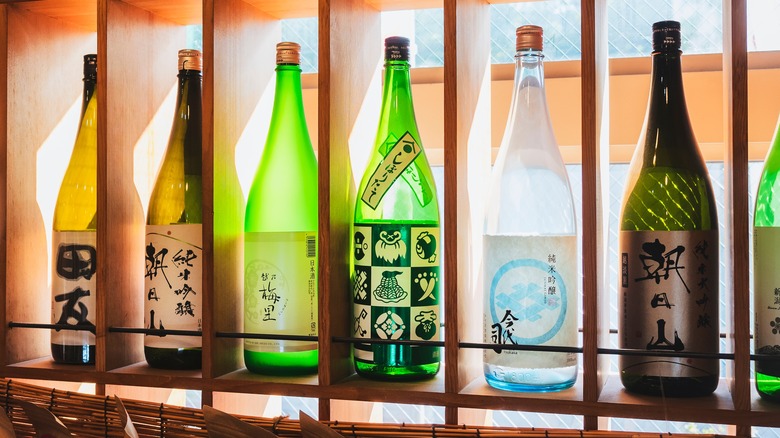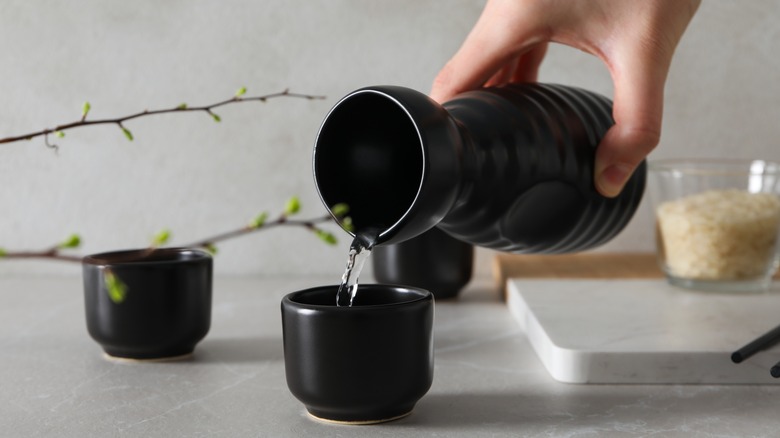Unlike Wine, Sake Generally Does Not Get Better With Age
Many wine connoisseurs and ordinary folks alike have a nice bottle of wine stashed away for a special occasion. It's common knowledge that aging wine can help improve many bottles, adding complexity and depth not found in newly-bottled varieties. But this truism doesn't hold up across the Pacific with Japan's rice-based wine, sake. In fact, it can even be the opposite.
Traditionally, most sake is designed to be enjoyed when it's still "young," or less than a year after it was bottled. Although most sake can be stored longer than this, those drinking it won't enjoy any extra benefits or flavor notes compared to someone who popped the bottle the day they bought it.
Still, one of the important things to know about drinking sake is that there are many varieties. In some cases, you should specifically not age sake. This is the case with unpasteurized or partially-pasteurized varieties of sake, often labeled as nama, namachozo, or namazume. Without full pasteurization, sake retains a brighter, fruitier taste but lacks the stability of typical versions and is more at risk of bacterial growth.
The exception to the sake rule
Like many rules of thumb with food and drinks, there's an exception to these guidelines involving sake and aging. A specific type of aged sake, known as koshu, is produced by artisanal brewers who typically hold it for at least three years before selling it. It's been described as darker in color, with a mellower flavor and even savory notes.
One thing that grape wine and sake have in common is that neither lasts very long once they're opened. After uncorking, the shelf life of sake is about one to two weeks. That's still noticeably longer than grape wines, which are at their best when drunk within five days of opening. However, the sooner you enjoy your sake, the better, as exposure to oxygen begins to degrade the flavor and aroma immediately then worsens over time.
Regardless of how long your sake has been sitting (opened or not), it's critical to recognize the signs it's gone bad. These include a yellowish tint (rather than a clear color), a pungent and unpleasant smell, or an acrid, unusually-acidic taste. The best solution to preventing spoiled sake? Don't let it get to that point by enjoying it as soon as you can!

